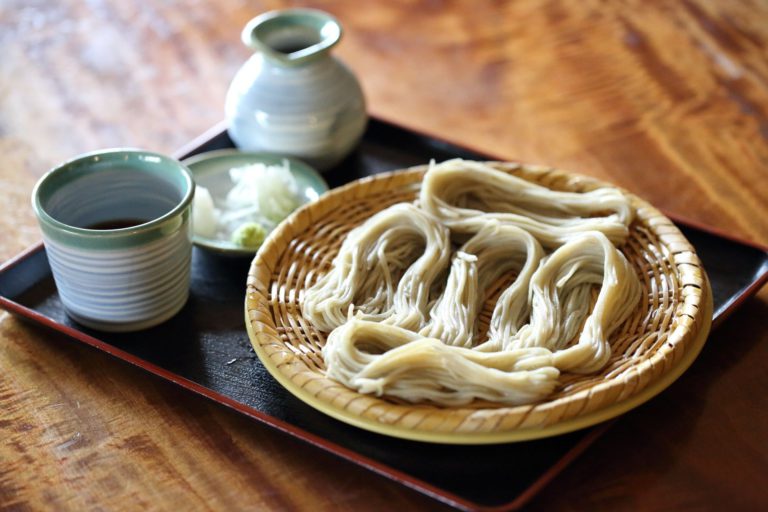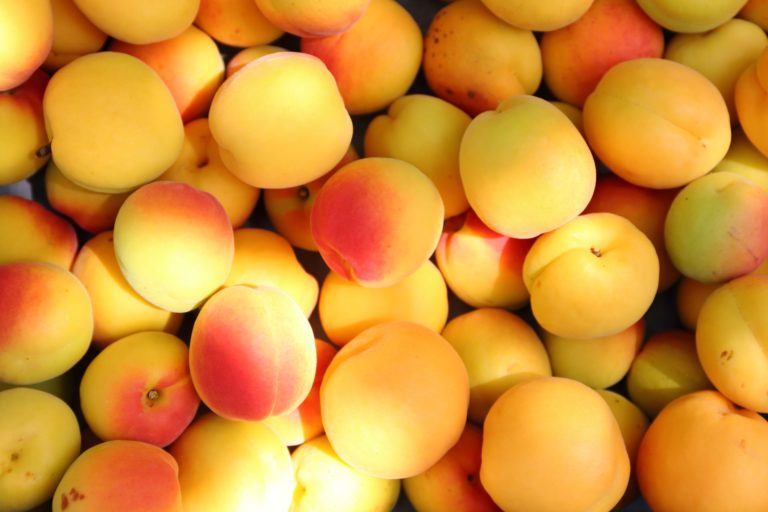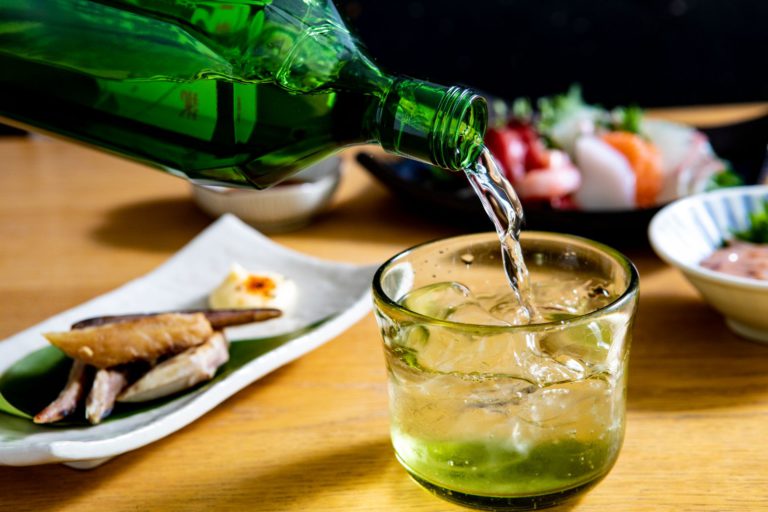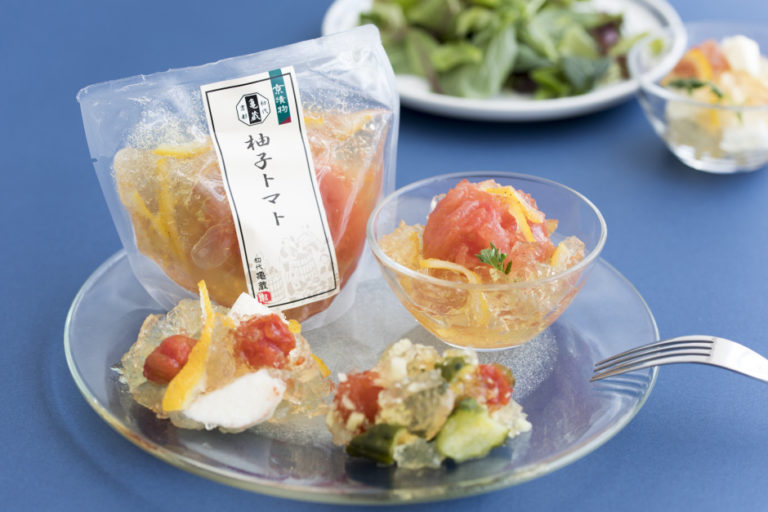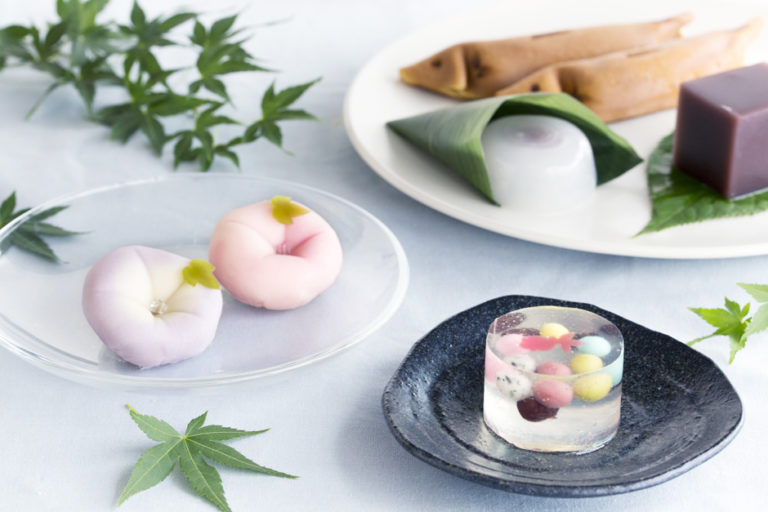Irohado’s Mission to Bring Nagano’s Local Dish Oyaki to Everyday Tables Around Japan
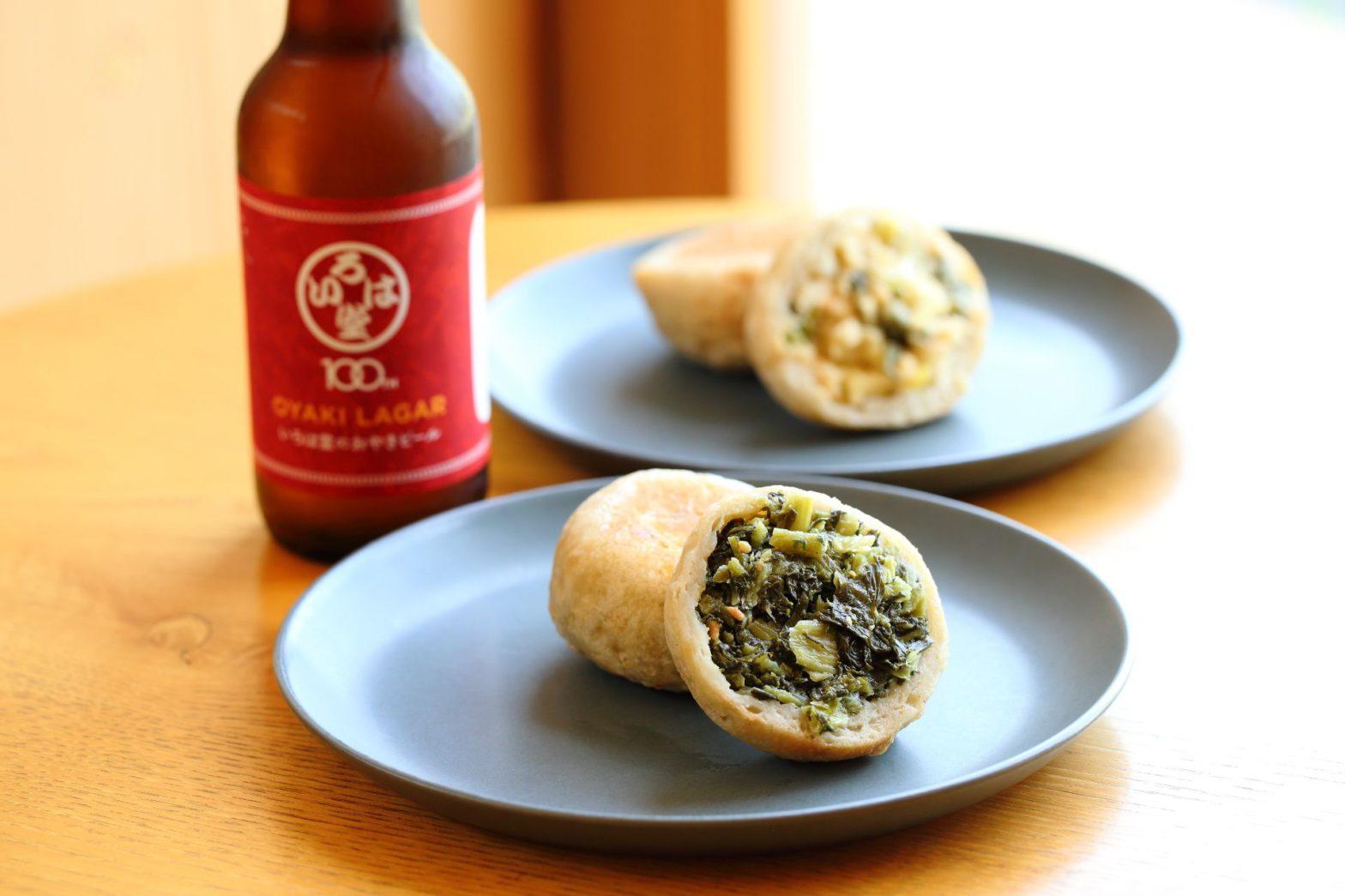
From Local Specialty to a Japanese Staple—The Oyaki Maker's Challenge
Nagano is home to many famous local foods, and the classic oyaki is one of them. This dish, made by wrapping fillings such as nozawana pickles, negi miso, or sweet red bean paste in wheat or buckwheat dough, is said to have originated in the mountain regions where rice could not be cultivated, eventually spreading across the prefecture as a household dish. While fewer people make oyaki at home today, the culture of eating them remains strong, with oyaki commonly found in supermarkets and convenience stores.
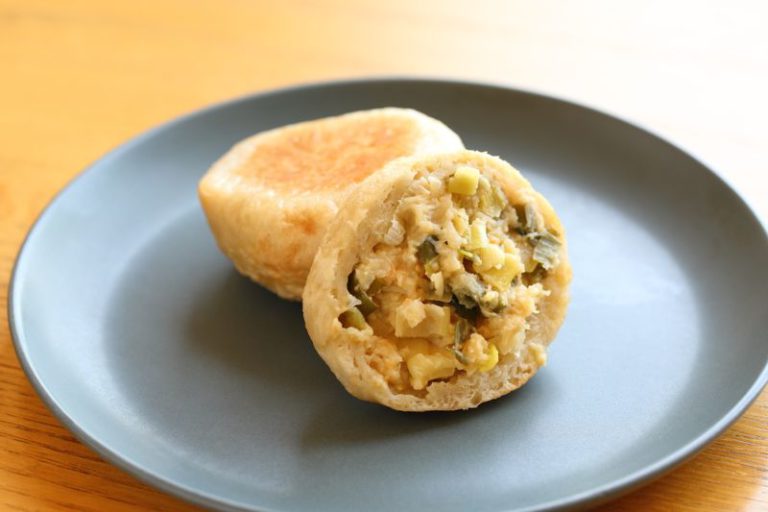
Nagano has several oyaki makers, and Irohado, founded in 1925, is one of the leading names. “Irohado originally made bread and Japanese sweets, but we began producing oyaki in the 1960s. That was when oyaki was shifting from something people made at home to something they purchased, and also when it started being promoted as a tourism resource,” says Hiromu Ito, the company’s fourth-generation president.
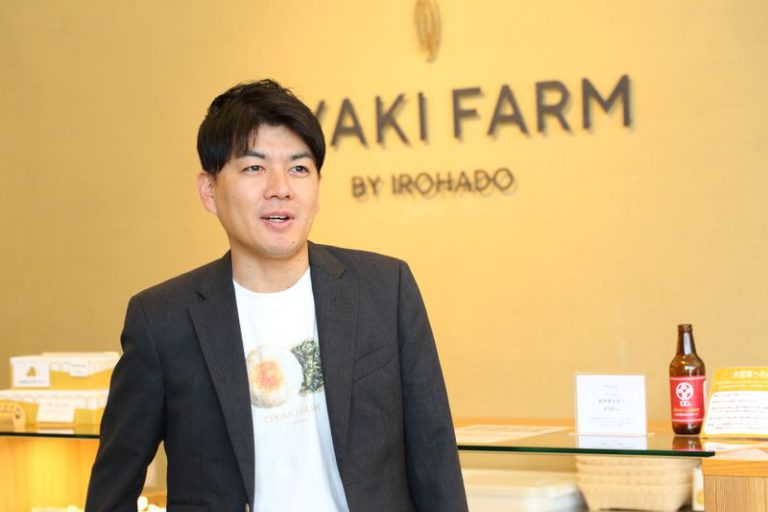
In 2022, Irohado opened Oyaki Farm, breathing new life into the oyaki industry. Ito explains that he wants to expand the possibilities of oyaki and promote it as a food culture people can enjoy in modern life.
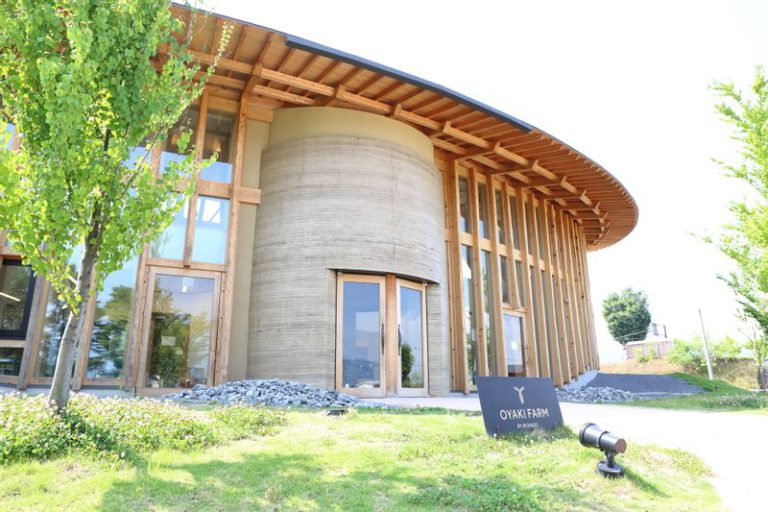
“I think many people imagine eating oyaki in a traditional Japanese house, gathered around an open hearth with tea. That nostalgic image is important, but I’d like people to enjoy them in many different settings. Oyaki are an easy way to get more vegetables. They go well with beer, and they pair nicely with coffee too. My goal is to preserve the identity of oyaki while also proposing new ways to enjoy them.”
Irohado's Oyaki—Hand-Wrapped and Filled with Vegetables

A visit to Oyaki Farm in Shinonoi, Nagano reveals a space that offers a fresh take on the rustic image of oyaki. The building, made with Nagano-grown timber, is as beautiful as a museum. The shop sells oyaki and related goods, while the cafe offers original menu items featuring oyaki. In the back, visitors can look into the factory through glass corridors or even try their hand at making oyaki in a workshop space.
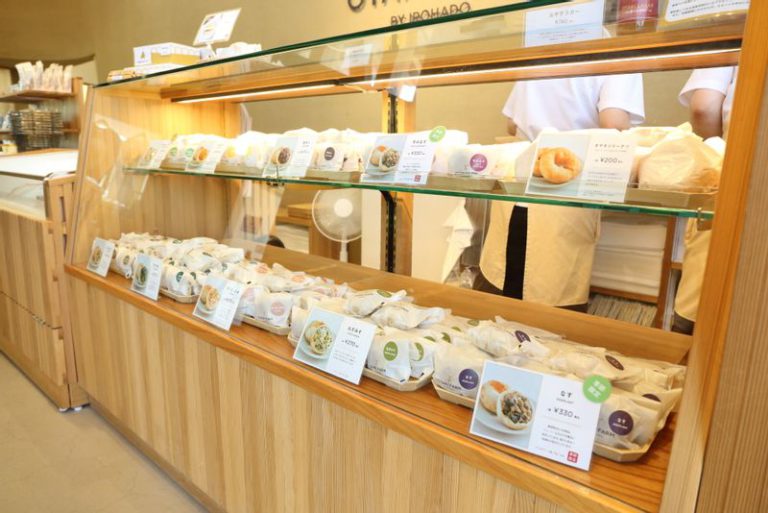
The factory produces between 8,000 and 14,000 oyaki a day. From preparing the vegetables for the fillings to making the dough and wrapping each oyaki, it is surprising to see how much of the work is still done by hand.

For example, the nozawana greens are boiled for more than 30 minutes to remove excess salt, and are carefully inspected to trim away any parts that might spoil the texture. Even the smallest steps are done with care.
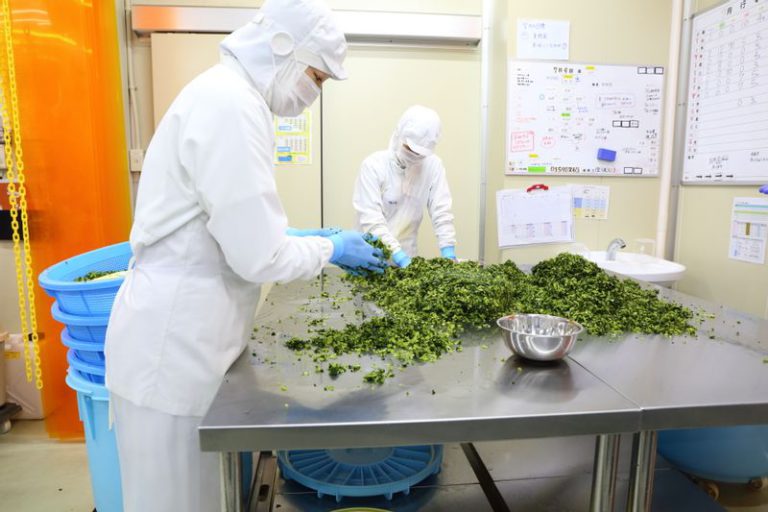
One of the hallmarks of Irohado’s oyaki is the chewy texture of its dough. The dough is made from wheat flour, bread flour, and whole-grain buckwheat flour. Drawing on the company’s experience in bread-making, they increase the water content to create a uniquely moist, chewy consistency.
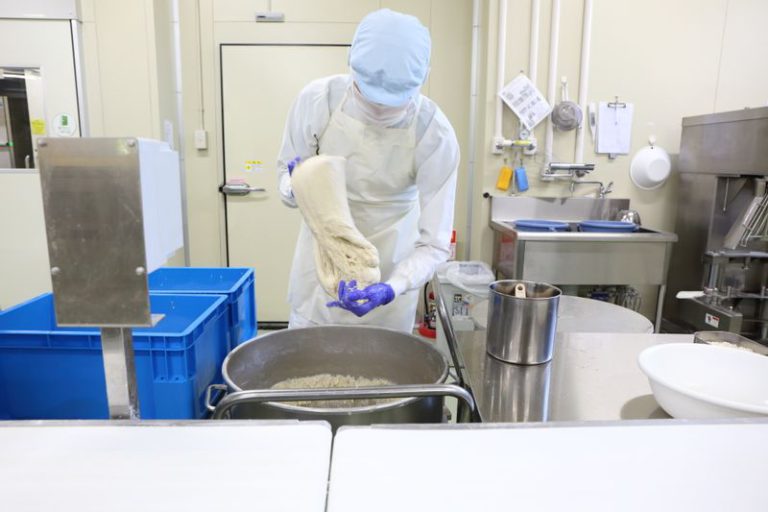
All vegetable oyaki are hand-wrapped. Each one is wrapped in about 20 seconds, but because the dough is soft and the ratio of filling to dough is 1:1, it takes great skill to prevent tearing. It can take up to a year of practice to master the technique.

After wrapping, the oyaki are fried in soybean oil for about a minute and a half before being baked. Once baked, they are flash-frozen and packaged the following day for shipment. Factory manager Yuki Tsukada, who showed us around the factory, explains:
“We source our vegetables mainly from Nagano, but also from across Japan. Visitors are always surprised at how much of the process is still done by hand. Our factory tours are always open, so we’d love for people to come and see for themselves.”
The Next 100 Years: Bringing Oyaki into Homes Across Japan
To broaden the occasions for enjoying oyaki, Oyaki Farm’s cafe offers a lineup of unique menu items. One popular treat is the Oyaki Ice Cream Sandwich, made by cutting a chunky red bean oyaki in half and filling it with milk ice cream from Nagato Farm. The creamy ice cream pairs perfectly with the sweet red bean filling. The cafe also serves a custom coffee blend created specifically to complement oyaki.

Savory oyaki also make excellent snacks to enjoy with drinks. At Oyaki Farm, visitors can even try Oyaki Lager, a craft beer brewed using nozawana oyaki that didn’t make it to the product line.
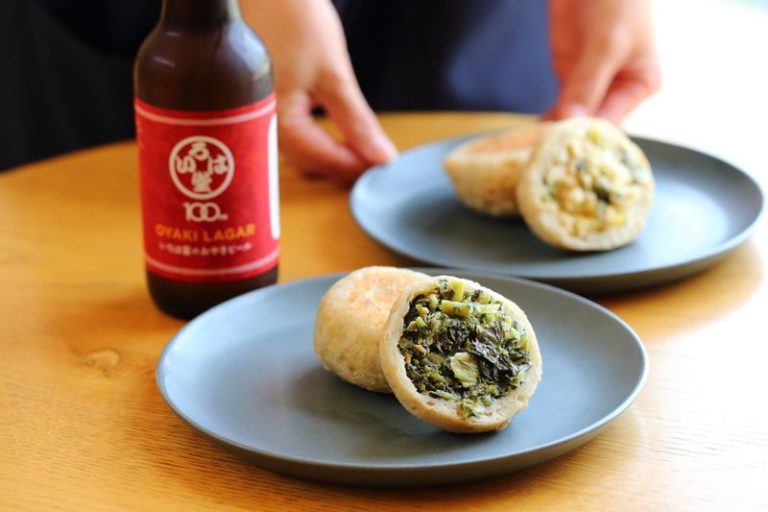
While experimenting with creative ways to present oyaki, Irohado remains committed to maintaining the traditional aspects of oyaki. Longtime favorites such as nozawana and negi miso with Shinshu miso remain at the heart of their lineup.
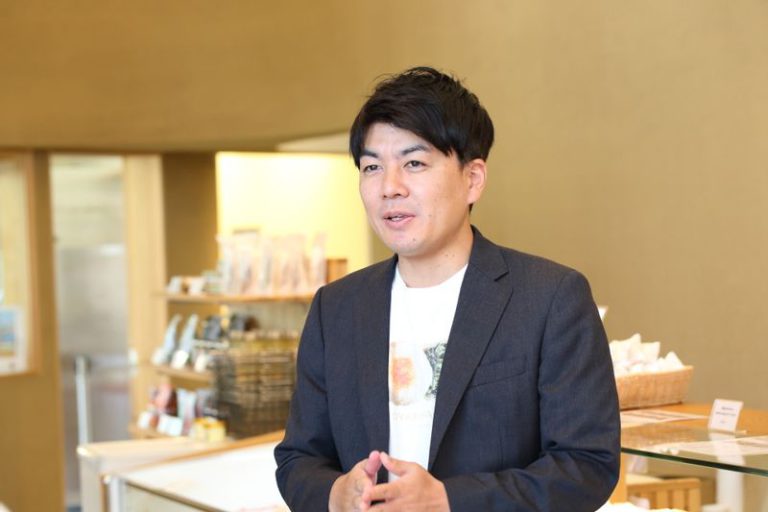
“These days, some places make Western-style oyaki with ingredients like Shinshu beef or game meat. And to be honest, you can make delicious oyaki with almost anything. But when it comes to spreading oyaki culture, I don’t think we can lose sight of what oyaki is traditionally. It’s important to preserve its identity as a traditional Nagano dish, while also making it something people outside the prefecture can enjoy as part of everyday life. That’s the kind of food I want oyaki to be.”
From the challenge of delivering this traditional local dish into people’s daily lives, it’s clear that Irohado’s journey is just beginning.



